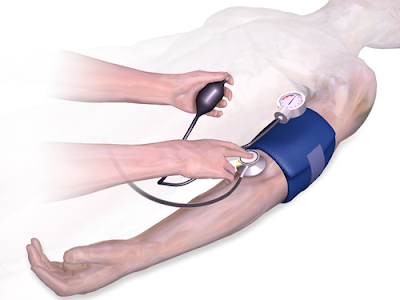Brutal Cost of the Husbandless Black Woman
From Queens to Wards of the State: The Brutal Cost of the Husbandless Black Household
There's a myth we were sold—a powerful, intoxicating lie whispered to young Black boys and shouted from the pulpits of cultural pride. It’s the story of the untouchable, infallible Black woman, a queen on a pedestal, inherently superior to all others. I was trained to believe it, to worship it. I was also trained to believe my own role as a Black man was secondary, a disposable utility good for little more than labor and entertainment. As I grew older and the harsh realities of the world scraped the fairy dust from my eyes, I saw the truth: the pedestal was a cage, and the queen was a subject. The government had become her master.
The folklore says Black women traded their husbands for the state, a deal brokered in the halls of social policy that promised security but delivered systemic dependency. This wasn't a power move; it was a catastrophic blunder. The data doesn't just suggest this; it screams it from a spreadsheet of ruin. While the narrative of the independent woman is sold as liberation, the numbers reveal a brutal truth for one specific group: out of all women, Black women are the ones who suffer the most from the absence of a husband, and by extension, are the ones who need one the most for sheer survival and stability.
The Great Trade: A Foundation of Sand
The promise of the state was that it could replace the protection and provision of a husband. The reality is that it has become an absentee landlord and a predatory lender. The most fundamental measure of stability—a roof over your head—has become a source of profound insecurity.
Look at the eviction data. It’s not just a disparity; it’s a targeted demolition. Black women renters are evicted at twice the rate of white women, a gap that persists even when you control for income. Foreclosures tell the same story. Black households led by women were the primary targets of the 2008 subprime crisis and continue to be pushed out of their homes at alarming rates. The state didn't offer a shield; it held the door open for the wolves. A husband provides a second income, a second line of defense. The government provides a stack of paperwork and a notice on the door.
Anatomy of a Collapse: Wealth, Health, and Well-being
The financial devastation is absolute. This isn't just about a wage gap; it's a complete erasure of wealth and a refusal to participate in the systems that build it. Only 35% of Black women invest in the stock market compared to 59% of white women. This isn't a choice; it's a symptom of a deeper pathology of financial fear and a lack of generational guidance—guidance often passed down from father to son, husband to wife. The result? The median net worth of a single Black woman is a pathetic $1,700, while a single white woman’s is $46,000. Nearly 60% of young Black women have zero or negative net worth. They aren't just starting from zero; they are living in a financial hole.
This economic stress manifests in the body, turning it into a warzone of chronic disease:
Cardiovascular Disease: The highest mortality rate of any group.
Diabetes: 60% more likely than white women.
Obesity: A staggering 56.9% prevalence.
Hypertension: Twice as likely as white women.
The body keeps the score, and the score is a catalogue of pain, stress, and premature death, exacerbated by a healthcare system that under-diagnoses and under-treats them.
"It is easier to build strong children than to repair broken men." — Frederick Douglass
The Unraveling of the Social Fabric
When the family unit disintegrates, the social fabric tears with it. The statistics on crime, debt, and abuse are not isolated data points; they are the cascading failures of a community without its masculine foundation. The overrepresentation of Black mothers in child neglect charges is often the criminalization of poverty—a poverty directly linked to a single-income household. The disproportionate number of Black women in sex work is not a lifestyle choice; it's economic survival at its most desperate.
Even consumer spending tells a story of compensation. The disproportionate spending on beauty, fashion, and convenience services isn't prosperity; it’s a coping mechanism, an attempt to purchase the status and self-esteem that a stable, secure life should provide naturally. It’s burning the furniture to heat the house for a night. Meanwhile, a crushing burden of student loans and consumer debt ensures the cycle of poverty continues, a ball and chain passed to the next generation.
Final Thoughts
Let's be brutally clear. This is not an attack. It is a diagnosis. The numbers are not an indictment of Black women's character, but a testament to the catastrophic failure of the ideology they were sold. The glorified myth I was taught as a boy was a poison that convinced men they were unnecessary and women they were invincible. The data proves both to be devastatingly false. The Black community is suffering from a gaping wound, and that wound is the empty space where a husband and father should be. The government is not a husband. A social program is not a father. And until we stop pretending otherwise, this catastrophic decline will only continue.
— Herbs of Ra 🌿
Sources
-
Centers for Disease Control and Prevention (CDC). STI Surveillance 2023—National Overview (disparities summary). CDC
-
CDC. Chlamydia Rates by Race/Age/Sex (Table 34) and by Age/Sex (Table 32); Screening coverage insights. CDC+2CDC+2
-
CDC/NCHS & NIDDK. Obesity prevalence (NHANES; highest among non-Hispanic Black women). CDC+2NIDDK+2
-
Bureau of Labor Statistics. Labor force characteristics by race & ethnicity, 2023. Bureau of Labor Statistics
-
National Community Reinvestment Coalition (NCRC). Racial Wealth Snapshot (median wealth of single adults). NCRC+1
-
U.S. Treasury. Racial differences in economic security—housing (homeownership gap). U.S. Department of the Treasury
-
Federal Reserve Bank of New York. Unequal Distribution of Delinquencies (auto-loan delinquency disparities); Credit cards & auto loans dashboard. Liberty Street Economics+1
-
Ariel–Schwab Black Investor Survey (Oct 2021 data tables) and summary. Schwab Content+1
-
EEOC. FY 2021 Federal Workforce Report (representation & pay). EEOC
-
Sociological Science & Urban Institute/Desmond. Eviction disparities (Black women disproportionately evicted). sociologicalscience.com+1
-
Assari S. Being Married Increases Life Expectancy of White but Not Black Americans (attenuated benefits). PMC
-
Brookings & CDC. Father involvement & child outcomes (evidence base on two-parent stability and engagement). Brookings+1




Comments